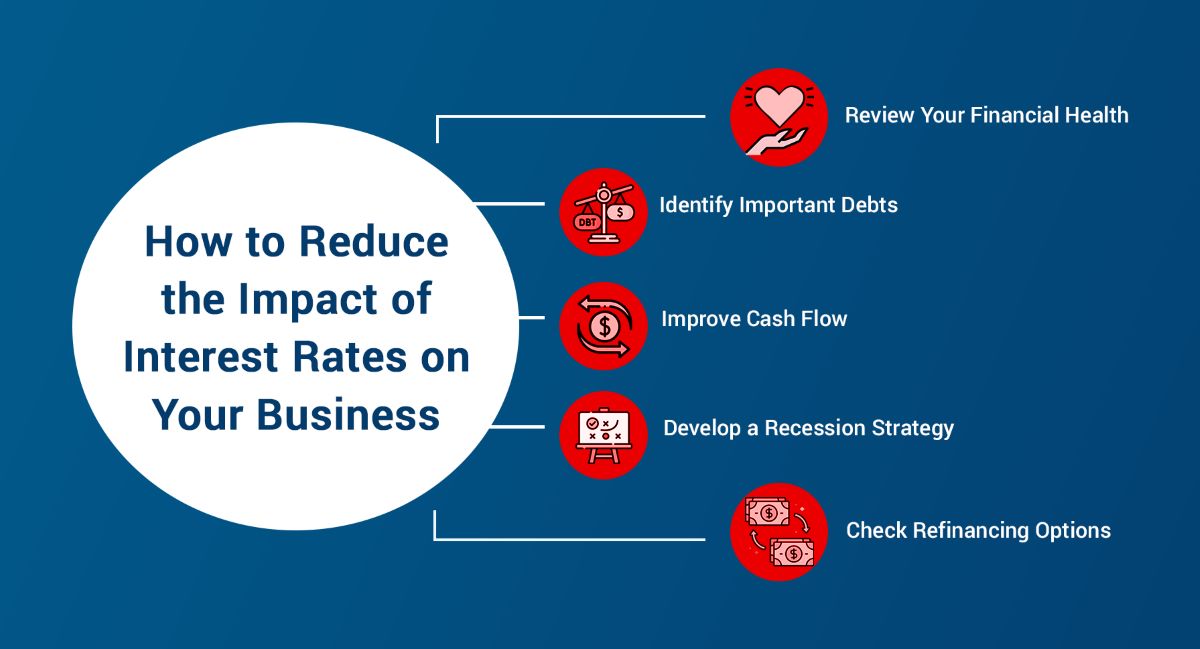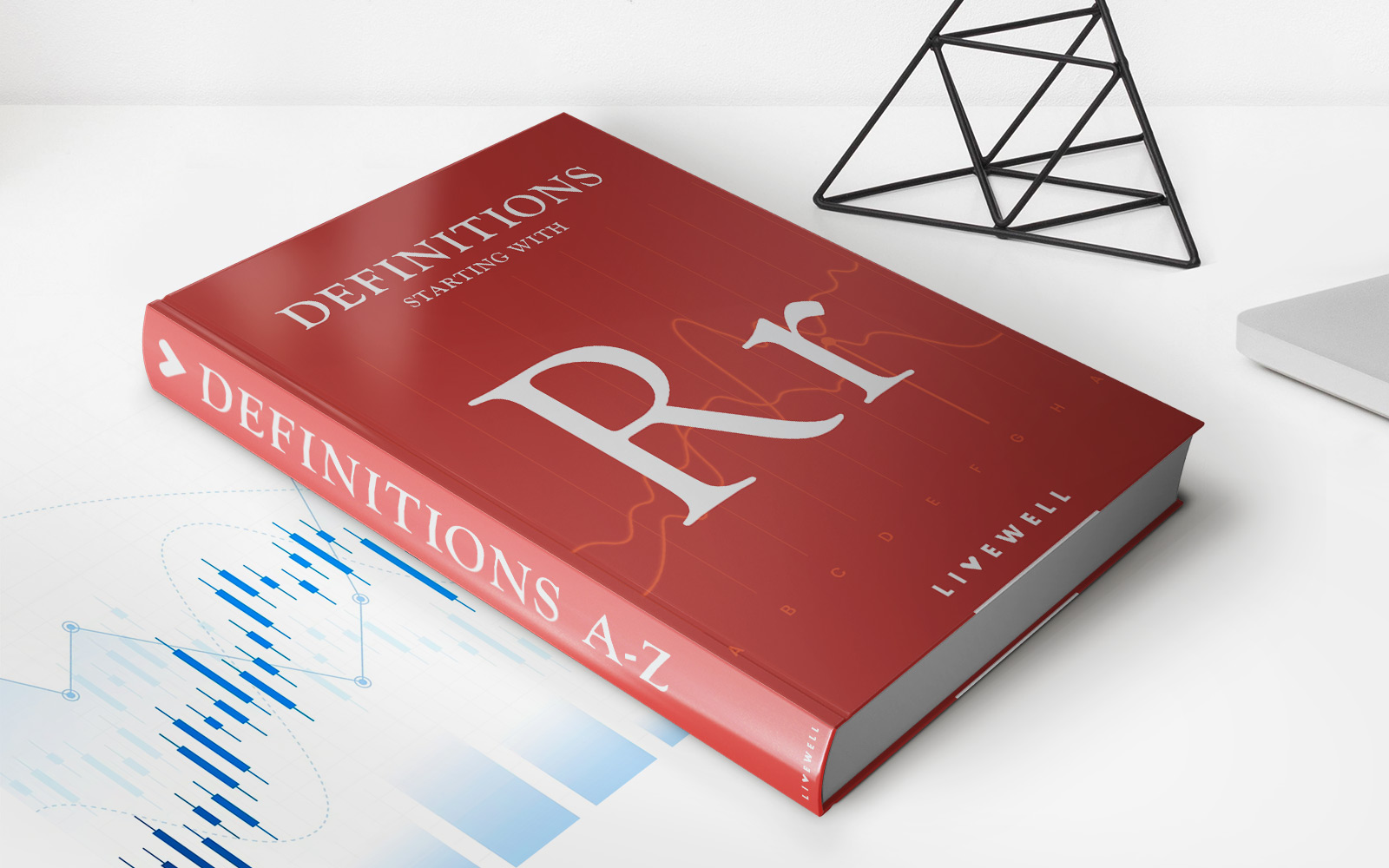Home>Finance>How Do Rising Interest Rates Affect Bond Funds?


Finance
How Do Rising Interest Rates Affect Bond Funds?
Published: November 1, 2023
Discover the impact of rising interest rates on bond funds in the finance world. Learn how this affects your investments and manage your portfolio effectively.
(Many of the links in this article redirect to a specific reviewed product. Your purchase of these products through affiliate links helps to generate commission for LiveWell, at no extra cost. Learn more)
Table of Contents
Introduction
Welcome to the world of finance, where understanding the impact of interest rates on investment options is crucial. In this article, we will explore the relationship between rising interest rates and bond funds. If you’re an investor or someone interested in personal finance, it’s important to comprehend how changes in interest rates can affect your investment portfolio.
But before we delve into the effects of rising interest rates on bond funds, let’s first establish a clear understanding of what bond funds are and how they work.
Bond funds are investment vehicles that pool money from multiple investors to invest in a diversified portfolio of bonds. Bonds are debt securities that are issued by governments, municipalities, or corporations to raise capital. When you invest in a bond, you essentially lend money to the issuer in exchange for periodic interest payments and the return of the principal amount at maturity. Bond funds offer individuals the opportunity to invest in a variety of bonds, providing diversification, liquidity, and professional management.
Now that we have a basic understanding of bond funds, let’s explore the relationship between interest rates and bond prices.
Interest rates and bond prices have an inverse relationship. When interest rates rise, bond prices typically fall, and vice versa. This inverse relationship is primarily driven by changes in the discount rate used to value bonds. When interest rates rise, newer bonds with higher yields become available, making existing bonds with lower yields less attractive. Consequently, the demand for these lower-yielding bonds decreases, leading to a drop in their market value.
Understanding this relationship is essential because it helps investors anticipate how changes in interest rates can impact their bond fund investments. As interest rates rise, bond fund investors may experience a decline in the value of their investments. However, it’s important to note that bond funds are different from individual bonds in terms of their structure and management. This fundamental difference can result in varying impacts on bond funds compared to individual bonds when interest rates rise.
In the following sections, we will dive deeper into this topic, explore the concept of duration, and examine how different types of bond funds are affected by rising interest rates. We will also discuss strategies that investors can employ to manage their bond fund investments in a rising interest rate environment.
What Are Bond Funds?
Bond funds are investment vehicles that offer individuals the opportunity to invest in a diversified portfolio of bonds. These funds pool money from multiple investors and are managed by professional fund managers who make investment decisions on behalf of the investors. Bond funds provide individuals with access to a variety of bonds, including government bonds, municipal bonds, corporate bonds, and international bonds.
One of the key advantages of bond funds is diversification. By investing in a bond fund, individuals can spread their investment across a wide range of bonds, reducing the impact of any one bond’s performance on their overall portfolio. This diversification helps to mitigate investment risk and can provide a more stable and consistent return compared to investing in individual bonds.
Bond funds also offer liquidity. Unlike individual bonds, which may have limited trading frequency, bond funds can be bought or sold on any business day at the fund’s net asset value (NAV). This liquidity allows investors to easily access their investment capital when needed, providing flexibility and convenience.
Another benefit of bond funds is professional management. Qualified fund managers analyze market conditions and make investment decisions based on their expertise and research. They have knowledge of bond markets, credit ratings, and market trends, which can help investors make informed investment choices. Fund managers actively manage the fund, buying and selling bonds to optimize returns and manage risk.
Bond funds also offer different investment options based on investment objectives and risk tolerance. For example, there are bond funds that focus on generating income by investing in higher-yield bonds, such as high-yield or junk bonds. There are also bond funds that prioritize capital preservation and invest in lower-risk bonds, such as government bonds. Investors can choose the type of bond fund that aligns with their investment goals and risk tolerance.
It’s important to note that bond funds charge fees for their management and administration. These fees, typically expressed as an expense ratio, cover the costs of managing the fund, including the compensation of the fund manager, administrative expenses, and marketing expenses. Investors should carefully consider the fees associated with bond funds and evaluate whether the potential returns justify the expenses.
Overall, bond funds provide individuals with a convenient and accessible way to invest in the fixed-income market. By offering diversification, liquidity, professional management, and various investment options, bond funds cater to a wide range of investors looking to generate income, preserve capital, or achieve a specific financial goal.
Understanding Interest Rates and Bond Prices
Interest rates play a vital role in the bond market and have a significant impact on bond prices. To understand how rising interest rates affect bond funds, it’s crucial to comprehend the relationship between interest rates and bond prices.
In simple terms, bond prices and interest rates have an inverse relationship. When interest rates rise, bond prices typically fall, and when interest rates decrease, bond prices generally rise. This inverse relationship occurs because bond prices are influenced by the yield or interest rate they offer to investors.
Let’s take a closer look at how this relationship works. When you purchase a bond, you are essentially lending money to the issuer in exchange for periodic interest payments, also known as coupon payments, and the return of the principal amount at maturity.
For example, imagine you buy a bond with a face value of $1,000 and a coupon rate of 4%. This means that you will receive $40 (4% of $1,000) in interest income annually until the bond matures. Now, let’s assume that prevailing interest rates rise to 5%.
With the higher interest rate of 5%, new bonds become available in the market offering a higher yield. As a result, investors would expect a higher return on their investment. If an investor can purchase a new bond with a 5% yield, they wouldn’t be willing to pay the full price for your bond that only provides a 4% yield.
To compensate for the lower yield compared to new bonds, the price of your bond would need to decrease. This decrease in price would raise your bond’s effective yield to be more in line with the prevailing interest rates. Conversely, if interest rates were to decrease to 3%, your bond’s price would likely increase as its 4% yield becomes more attractive compared to new bonds with lower yields.
When analyzing the relationship between interest rates and bond prices, it is essential to consider the concept of yield to maturity (YTM). YTM represents the total return an investor can expect to earn if the bond is held until maturity, taking into account the bond’s current market price, the face value, and the coupon rate. As interest rates change, the YTM of a bond will also adjust accordingly.
It’s important to note that while the inverse relationship between interest rates and bond prices holds true in most cases, not all bonds are affected in the same way. Factors such as the bond’s maturity date, duration, credit rating, and coupon rate can influence how a bond’s price reacts to changes in interest rates.
In the next sections, we will explore the concept of duration and its relationship to bond prices. We will also discuss how different types of bond funds are impacted by rising interest rates and strategies investors can employ to manage their bond fund investments in a changing interest rate environment.
How Interest Rate Changes Impact Bond Funds
The impact of interest rate changes on bond funds is a topic of great importance for investors. When interest rates rise or fall, bond fund investors can experience fluctuations in the value of their investment. Let’s explore how interest rate changes impact bond funds.
As mentioned earlier, bond prices and interest rates have an inverse relationship. When interest rates rise, the value of existing bonds typically falls because newer bonds with higher yields become available. This decrease in bond prices affects bond funds as well, as their portfolio consists of various bonds with different maturities and interest rates.
When interest rates rise, bond funds, particularly those holding longer-term bonds, may experience a decline in their Net Asset Value (NAV). The NAV represents the value of the fund’s assets minus its liabilities, divided by the number of outstanding shares. The decrease in bond prices lowers the NAV of the fund, causing the value of each share to decline as well.
Conversely, when interest rates decline, bond prices tend to rise, leading to an increase in the NAV of bond funds. This can result in capital appreciation and a higher value for each share of the fund.
It’s important to note that the impact of interest rate changes on bond funds can vary based on the fund’s duration. Duration is a measure of a bond’s sensitivity to changes in interest rates. It takes into account factors such as the bond’s maturity date, coupon rate, and cash flow timing. The longer the duration of a bond, the more sensitive it is to changes in interest rates.
If a bond fund has a high average duration, it is more susceptible to interest rate fluctuations. In a rising interest rate environment, bond funds with longer durations are likely to experience greater price declines compared to funds with shorter durations.
Additionally, the impact of interest rate changes can differ between bond funds that hold individual bonds until maturity and those that actively manage their portfolios. Bond funds that hold individual bonds until maturity, also known as buy-and-hold funds, will experience the value fluctuation of their holdings, but the impact on individual investors will be limited if they hold the fund until maturity.
On the other hand, actively managed bond funds have the flexibility to adjust their portfolio in response to changing interest rates. Fund managers can make strategic decisions, such as altering the mix of short-term and long-term bonds, adjusting duration, or adding bonds with higher coupon rates. These adjustments can help mitigate the impact of interest rate changes on the fund’s performance.
In summary, rising interest rates can negatively affect the value of bond funds, particularly those with longer durations. Conversely, falling interest rates can lead to capital appreciation. Understanding the duration of a bond fund and its management style is essential for investors to assess the potential impact of interest rate changes on their bond fund investments.
Duration and Its Relationship to Bond Prices
Duration is a key concept in bond investing that measures the sensitivity of a bond’s price to changes in interest rates. It provides investors with a tool to assess the potential impact of interest rate fluctuations on bond prices. Understanding duration is crucial in comprehending the relationship between bond prices and interest rates.
Duration is expressed in years and represents the weighted average time it takes to receive the present value of all cash flows from a bond, including coupon payments and the return of the principal amount at maturity. It takes into account the bond’s time to maturity, coupon rate, and the prevailing interest rate environment.
As a general rule, the higher the duration of a bond, the more sensitive it is to changes in interest rates. This means that bonds with longer durations will experience larger price changes when interest rates fluctuate, compared to bonds with shorter durations.
To understand this relationship, let’s consider an example. Suppose you hold a bond with a duration of 5 years and interest rates increase by 1%. Based on the theory of duration, the bond’s price would be expected to decrease by approximately 5% (duration multiplied by the change in interest rates). Conversely, if interest rates were to decrease by 1%, the bond’s price would be expected to increase by approximately 5%.
This relationship between duration and bond prices holds true because of the present value calculation. When interest rates rise, the future cash flows from a bond become less valuable in today’s dollars. This reduces the present value of the bond’s cash flows and leads to a decrease in price. Conversely, when interest rates decline, the future cash flows become more valuable, increasing the bond’s present value and resulting in a price increase.
It’s important to note that duration is not the same as a bond’s maturity. Maturity represents the length of time until the bond’s principal amount is repaid, whereas duration measures the sensitivity of a bond’s price to changes in interest rates. Bonds with similar maturities can still have different durations, depending on their coupon rates and prevailing interest rates.
Duration plays a significant role in bond fund investing as well. When investing in bond funds, investors are exposed to the portfolio duration, which is the average duration of the bonds held in the fund. Like individual bonds, bond funds with longer average durations will be more sensitive to interest rate fluctuations, while funds with shorter durations will be less affected.
Investors should consider the duration of bond funds when assessing their risk tolerance and investment objectives. If an investor is sensitive to potential fluctuations in bond prices due to changing interest rates, they may opt for bond funds with shorter durations to reduce their exposure to interest rate risk.
Overall, duration provides investors with a useful metric to gauge the potential impact of interest rate changes on bond prices. By understanding duration and its relationship to bond prices, investors can make informed decisions about their bond investments and manage their risk exposure accordingly.
Effects on Different Types of Bond Funds
Rising interest rates can affect different types of bond funds in different ways. The impact of interest rate changes on bond funds can vary depending on the types of bonds the fund holds, the fund’s duration, and other factors specific to each fund’s investment strategy.
Let’s explore the effects of rising interest rates on different types of bond funds:
- Government Bond Funds: Government bond funds primarily invest in bonds issued by government entities, such as Treasury bonds and agency bonds. In a rising interest rate environment, government bond funds can experience a decline in their NAV as bond prices fall. This is because government bonds are considered relatively low-risk investments, and investors become more inclined to switch to newer bonds with higher yields. However, government bond funds with shorter durations may experience less significant declines in value compared to funds with longer durations.
- Corporate Bond Funds: Corporate bond funds invest in bonds issued by corporations. When interest rates rise, corporate bond funds can also face a decrease in their NAV, as investors may prefer bonds with higher yields. Additionally, rising interest rates can increase borrowing costs for corporations, potentially impacting their ability to repay bonds. However, corporate bond funds that focus on investment-grade bonds may be less affected since these bonds are generally less sensitive to interest rate changes.
- High-Yield Bond Funds: High-yield bond funds, also known as junk bond funds, invest in bonds with lower credit ratings and higher yields. In a rising interest rate environment, high-yield bond funds may experience a reduction in their NAV as investors seek higher returns from bonds with safer credit ratings. High-yield bonds tend to be more sensitive to changes in interest rates and credit risk, so it’s important for investors to assess their risk tolerance before investing in these funds.
- Municipal Bond Funds: Municipal bond funds invest in bonds issued by municipalities and states. The impact of rising interest rates on municipal bond funds can depend on factors such as the credit quality of the bonds and the fund’s duration. While rising interest rates can lead to a decrease in the NAV of municipal bond funds, they can still offer attractive tax advantages for certain investors, as the interest income from municipal bonds is typically exempt from federal taxes.
- International Bond Funds: International bond funds invest in bonds issued by foreign entities. The impact of rising interest rates on international bond funds can vary depending on the countries and currencies in which the bonds are denominated. The performance of these funds can be influenced by not only interest rate changes but also currency exchange rate fluctuations, geopolitical factors, and economic developments in different countries.
It’s important to consider that while rising interest rates can have a negative impact on bond fund values, they can also result in higher yields for new bond purchases. Thus, investors who hold their bond funds through interest rate increases may benefit from higher coupon payments and potential capital appreciation if interest rates eventually decline.
Investors should carefully assess their investment goals, risk tolerance, and time horizon when selecting bond funds. Understanding the types of bonds a fund holds, its duration, and any potential risk factors can help investors make informed decisions about which bond funds align with their financial objectives.
Strategies for Managing Bond Funds in a Rising Interest Rate Environment
Investors who have bond funds in their investment portfolio may wonder how they can effectively manage their bond investments in a rising interest rate environment. Here are some strategies to consider:
- Assess and Adjust Duration: Duration is a key factor in determining a bond fund’s sensitivity to changes in interest rates. In a rising interest rate environment, investors may consider shifting to bond funds with shorter durations. Shorter duration funds tend to be less affected by interest rate increases since they have lower exposure to future interest rate changes. Additionally, investors can assess their risk tolerance and make adjustments to their bond fund allocation based on the expected impact of rising interest rates.
- Diversify Across Bond Types and Sectors: Diversification is a fundamental principle of investing, and it applies to bond funds as well. By diversifying across different types of bonds, such as government bonds, corporate bonds, and municipal bonds, investors can spread their risk and potentially offset any negative impact from rising interest rates in one segment of the bond market with positive performance in another. It’s also important to diversify across sectors to avoid overexposure to specific industries or issuers.
- Consider Floating Rate Bond Funds: Floating rate bond funds can be considered as an option in a rising interest rate environment. These funds invest in bonds with variable interest rates that reset periodically based on a benchmark rate, typically tied to short-term interest rates. As interest rates rise, the coupon payments of floating rate bonds increase, providing potentially higher income for investors. Floating rate bond funds can help mitigate the negative impact of rising interest rates on fixed-rate bond funds.
- Monitor and Review Your Investment Strategy: Keeping a close eye on market conditions and regularly reviewing your investment strategy is essential. Economic factors, central bank announcements, and changes in inflation expectations can all impact interest rates. Staying informed and adapting your investment strategy accordingly can help capture potential opportunities or mitigate risks. It’s important to remember that market conditions can change, and flexibility in adjusting your bond fund allocation can be valuable.
- Focus on High-Quality Bonds: During periods of rising interest rates, high-quality bonds tend to perform better compared to lower-rated bonds. High-quality bonds, such as investment-grade corporate bonds or government bonds, are generally less sensitive to changes in interest rates and offer more stability. Investing in bond funds that prioritize higher credit quality can help reduce the potential impact of rising interest rates on your investment portfolio.
- Consider Professional Management: If you are uncertain about managing your bond investments during a rising interest rate environment, considering professional management through actively managed bond funds or the assistance of a financial advisor may be beneficial. Professional fund managers have expertise in analyzing market conditions, researching bonds, and making informed investment decisions. They can actively adjust the bond fund’s portfolio and make strategic moves to navigate changes in interest rates.
It’s important to note that bond prices and interest rates are influenced by numerous factors, and predicting their future movements accurately can be challenging. These strategies aim to provide general guidance but may not guarantee specific outcomes or performance results. Investors should consider their individual financial goals, risk tolerance, and consult with a financial advisor to determine the most suitable strategy for managing their bond funds in a rising interest rate environment.
Conclusion
Understanding the relationship between rising interest rates and bond funds is crucial for investors seeking to manage their investment portfolios effectively. As we’ve explored in this article, rising interest rates can have an impact on bond prices and the performance of bond funds. However, the extent of this impact varies depending on factors such as the duration of the fund, the types of bonds it holds, and the fund’s investment strategy.
When interest rates rise, bond prices typically fall, leading to a potential decrease in the Net Asset Value (NAV) of bond funds. Bond funds with longer durations tend to be more sensitive to interest rate changes compared to those with shorter durations. Different types of bond funds, such as government bond funds, corporate bond funds, high-yield bond funds, municipal bond funds, and international bond funds, may experience varying effects from rising interest rates based on the specific characteristics of the bonds they hold.
To navigate a rising interest rate environment, investors can employ several strategies. These strategies include assessing and adjusting the duration of their bond fund holdings, diversifying across different bond types and sectors, considering floating rate bond funds, monitoring and reviewing their investment strategy regularly, focusing on high-quality bonds, and seeking professional management through actively managed bond funds or financial advisors.
It’s important for investors to remember that interest rates are influenced by various economic and market factors, and predicting their movements accurately can be challenging. Therefore, staying informed, being proactive, and regularly assessing investment strategies is key. Investors should align their bond fund investments with their financial goals, risk tolerance, and individual preferences.
In conclusion, rising interest rates can impact bond funds, but with careful planning and understanding, investors can navigate these changes and continue to benefit from the income and diversification that bond funds provide. By staying engaged, assessing market conditions, and implementing appropriate strategies, investors can manage their bond fund investments effectively in a rising interest rate environment.














